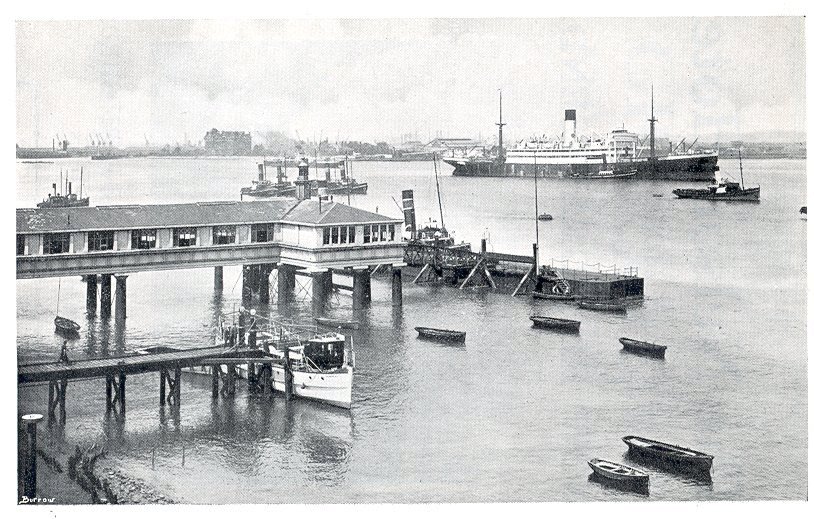

 |
|
The site of the Town Pier has been a landing place since before the time of the Domesday Book (1086). By the 1820's the landing stairs at what was to become the pier location had become totally inadequate for the volume of landings being made in the town, leading to public demand for a pier. Opposition to this scheme was voiced chiefly by the Gravesend watermen who stood to lose their livelihood. After two Acts for the right to construct a pier failed to pass Parliament, the Gravesend town authorities erected a temporary wooden pier during Parliament's recess in 1833. The watermen rioted, causing considerable damage to the temporary pier with saws and hammers before troops belatedly arrived to quell the disturbance. Parliament lost sympathy with the watermen following the riot and an Act authorising the building of a pier was finally passed. The pier was opened in 1834. It was designed by William Tierney Clarke whose projects included a suspension bridge for Budapest and who was responsible for the completion of the Thames and Medway canal. The impact of the pier was immediate, with the number of passenger movements doubling in its first year, causing the Gravesend and Milton Magazine to write in 1834 that the pier had enabled Gravesend to transform itself from being "a place only of consequence to naval men" to such an extent that "this once insignificant locality is now a place where thousands have rushed with a centripetal force, and millions with follow them". This proved to be the case with usage reaching one million for the first time in 1839 thanks to the combination of the pier and steam navigation. Unfortunately the heyday of the pier proved to be short lived, and the the 1850's the volume of traffic had dropped considerably, as a result of the continuing development of the railways. In 1854 the pier had its roof added, by which time it was used exclusively as a terminal for the Gravesend-Tilbury ferry, which had been developed with the opening of the London, Tilbury and Southend Railway Company line to Tilbury. The Railway company bought the pier in 1886, it transferred to the ownership of British Rail after the nationalisation on 12940 and was put up for sale in 1963. The ferry continued to run from the pier until 1965 when the opening of the Dartford-Purfleet Tunnel reduced demand for crossings and the ferry was moved to the neighbouring pier at West Street. The pier remained empty for a number of years before being bought by a local businessman who removed the ferry pontoon and converted the pier into a night-club ("The Crystal Room") in 1970, with usage as a restaurant and amusement arcade following. Since 1985 the pier has been partially occupied as offices by a local company with the other three quarters remaining empty. From "Dartford and Gravesend Building Preservation Trust" which can be found at "www.btinternet.com/~broadley/trust/page9.html" |
Return to: